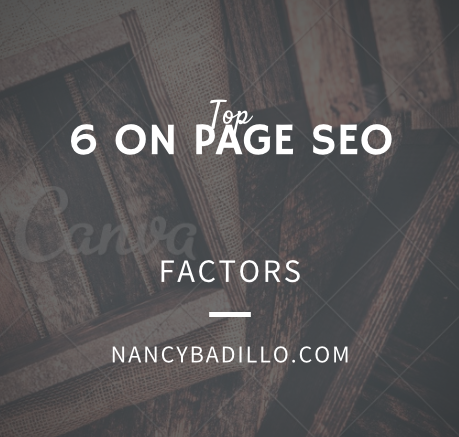Lots of people think that SEO is difficult, but it is not true. SEO configurations are simple to implement and at times it is all what you have to do for utmost exposure on all the chief search engines. I have listed the top 6 on page SEO factors that you can start implementing right away. To achieve maximum results in the search engines you will need to implement on page SEO. Properly following these steps will help your website have better rankings and increase visibility in the search engines. On page SEO doesn’t have to be difficult just follow this guide to have maximum results in the search engine.
Top 6 On Page SEO Factors
1. Keyword In Title
Make sure to add the keyword in the title. To run an effective On Page SEO the keyword should appear in your title. Title tags help search engines know what your page is about. The oldest trick in SEO is making sure your keywords appear in your title.
2. Meta Description
Meta descriptions tags, while not important to search engines rankings, are extremely important in gaining user click through from SERP’s. Meta description can be any length. I would recommend writing no longer than 150- 160 characters since the search engine generally snips it.
3. Heading Tags
Heading tags are the simplest way to divide up your document. Adding headlines is the simplest way to differentiate the heading of a page from the rest of the content.
Make sure to always include the following:
- Use headings to improve your SEO
- Use headings to improve accessibility
- Always use an H1 heading tag
Here is the chronological order you should be using headlines:
- H1 The most important one
- H2 Important, but less important than H1
- H3 Less important than H2 but more important than H4
- H4 Getting less and less important
- H5 Even less important
- H6 The last important of them all not used very often
4. Content
One among the reasons you’ve a blog or website is to offer contents to build up an audience, keep existing readers pleased or gain new clients. By contents, everything we mean everything from articles, info-graphics, slideshows, videos, music, reviews, comments, or anything else which is fit for your own niche. If your contents are static, out of date or old then most probably the visitors will leave quickly and will never come back.
Questions to consider about your content:
- Are you producing quality content?
- Do you publish new fresh content on a regular basis?
- Do you offer real value?
- Are you providing unique content that can’t be found elsewhere?
5. URL Structure
A site’s URL structure should be as simple as possible for the search engine and the human eye to be able to identify what the post is all about. URL structure when done correctly will help with your SEO strategy. Make sure your URL are SEO friendly.
For example:
Incorrect URL Structure: www.domain.com/index.php.?id=1
Correct URL Structure: www.domain.com/page-name/
Make sure to integrate these rules:
- Only use hyphens to separate words
- URL should not be longer than 2048 characters
- Avoid the use of parameters
6. Improve Loading Time
If it is the very first time you’re reading the page, speed is vital for SEO as soon after reading it you must do whatever is required to improve loading time of the website. If you’ve read about it before and haven’t done anything yet about it, then you are making a big mistake.
[box type=”info”]I hope this guide comes in handy when integrating on page SEO factors. Make sure to subscribe to my blog to stay updated with the latest online marketing trends. [/box]


SEO is not difficult if you know how to do it and it is not hard to learn. Great article Nancy!